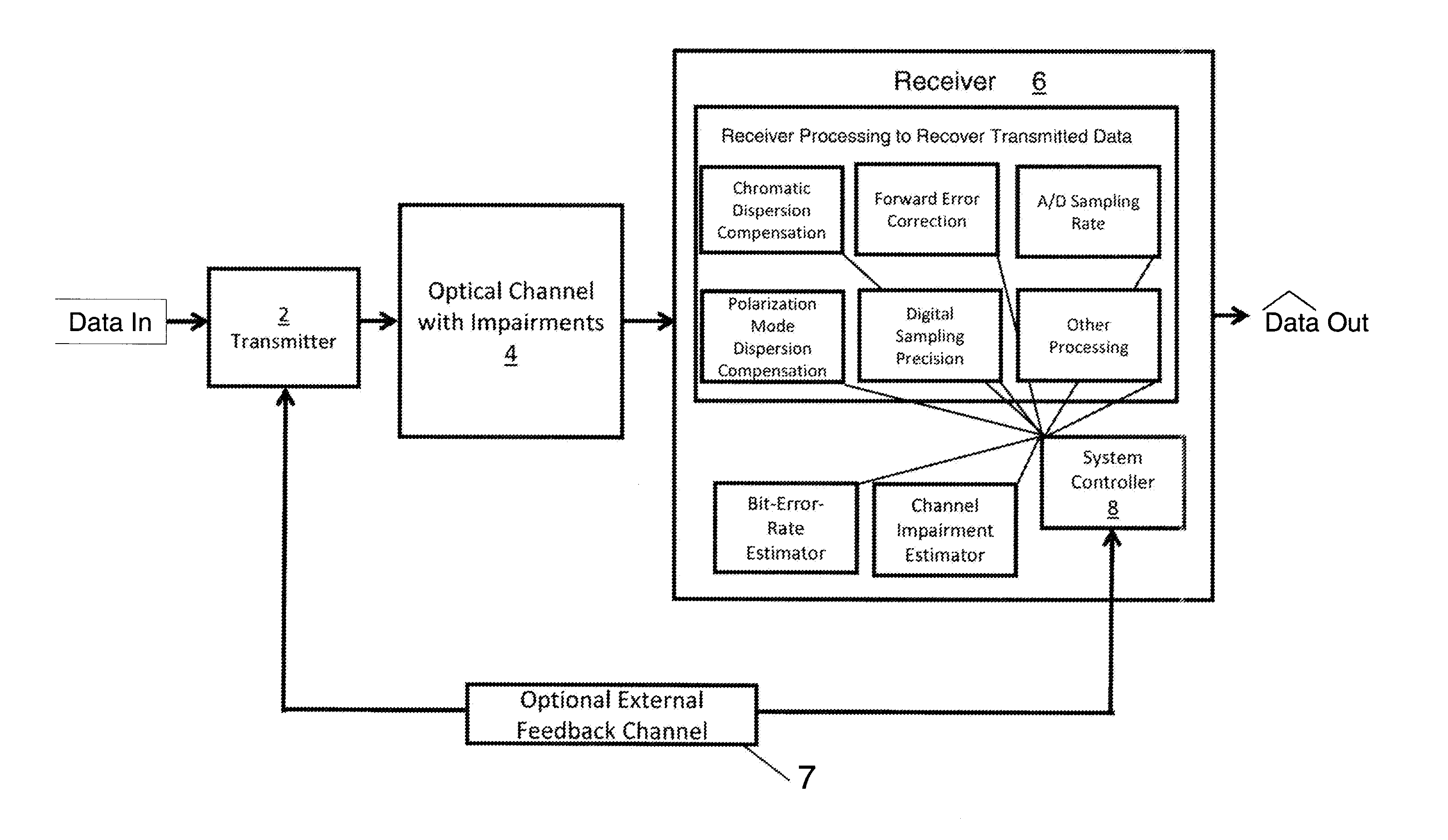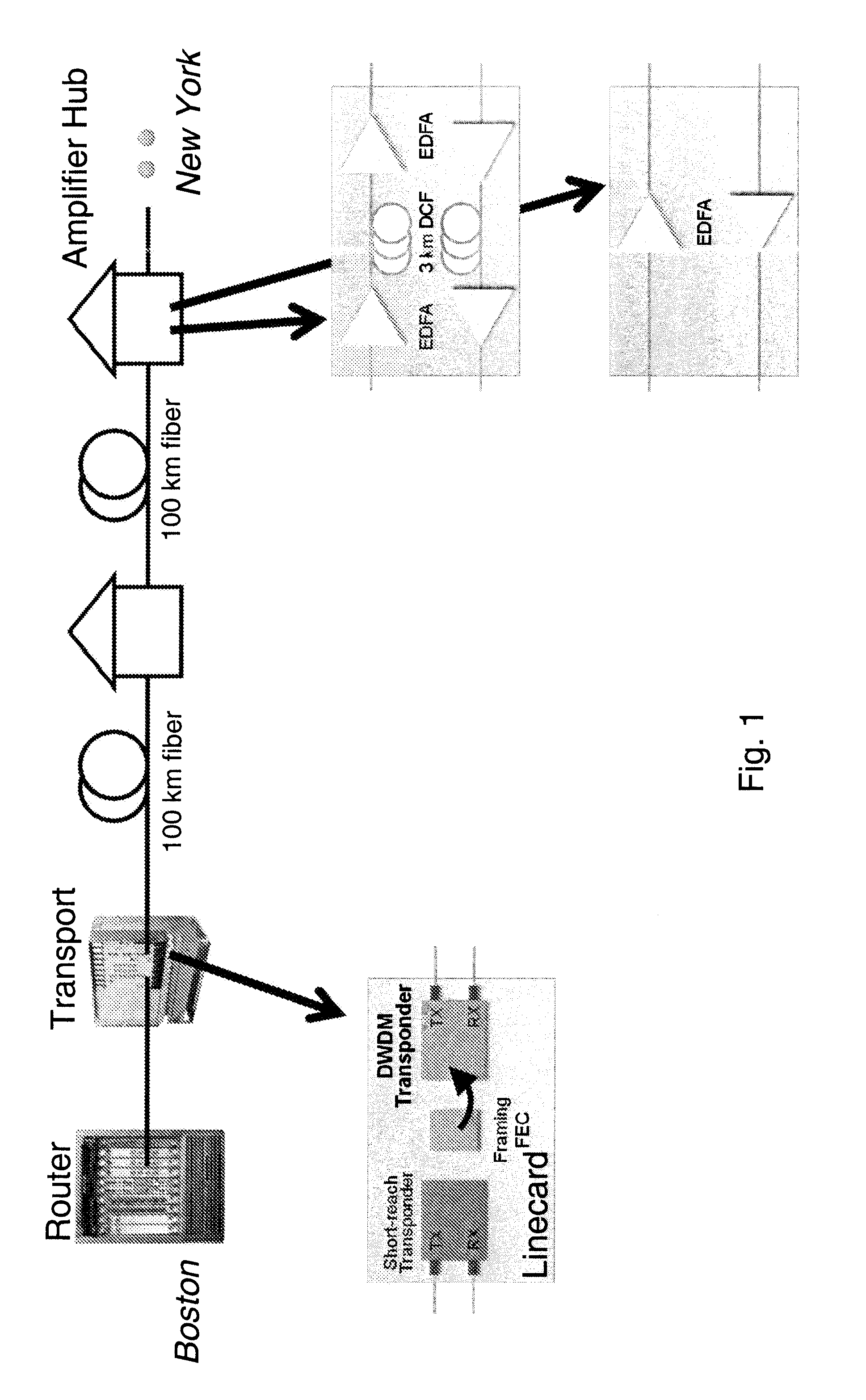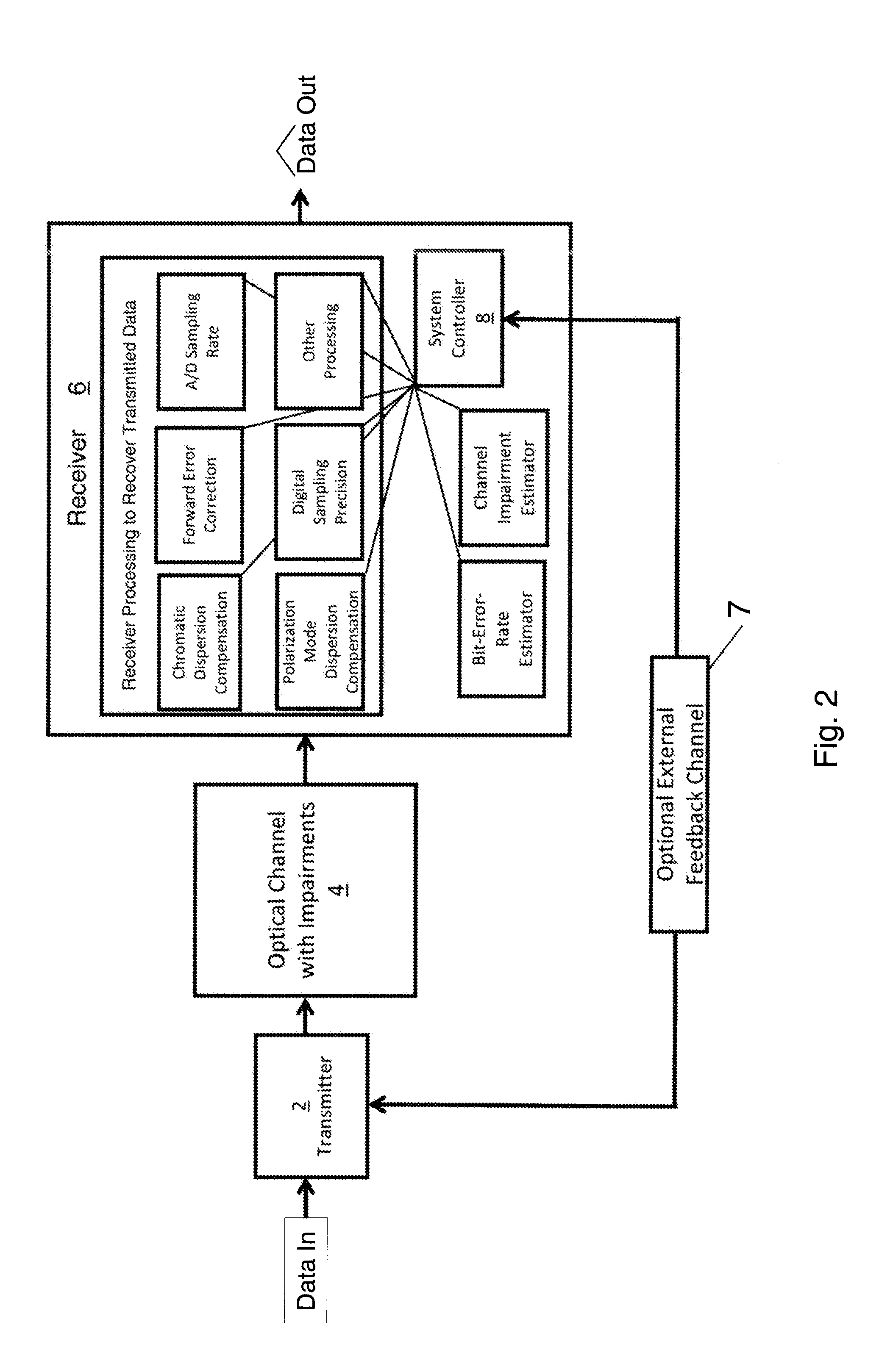Reconfigurable DSP Performance in Optical Transceivers
a technology of optical transceivers and optical transceivers, applied in electromagnetic transmission, electrical equipment, transmission, etc., can solve the problems of complex and costly asics or fpga development, take years of development time, and can cost upwards of $1m to develop, so as to minimize the total power dissipation, reduce the effect of chromatic dispersion compensation function and reduce power dissipation
- Summary
- Abstract
- Description
- Claims
- Application Information
AI Technical Summary
Benefits of technology
Problems solved by technology
Method used
Image
Examples
Embodiment Construction
[0025]In brief overview and referring again to FIG. 1, it can be envisioned that there are many installation scenarios of interest to system vendors and their end customers who are telecommunication companies, cable operators, and data centers, government organizations, etc. There are several metrics that help define the installation scenario with respect to the needs of the optical transceiver system. This includes: 1) the transmission distance which is often loosely described as LAN, metro, regional, long-haul, and ultra-long-haul applications; 2) the fiber type standard SMF (single mode fiber), zero-dispersion fiber, dispersion shifted fiber, and other types of fiber; 3) the dates on which the fiber was manufactured and how it was installed; and 4) the characteristics of how the optically amplified link is designed (e.g. with amplifier huts and with or without dispersion compensation at each amplifier hut). It is these and other widely varying characteristics—total transmission d...
PUM
 Login to View More
Login to View More Abstract
Description
Claims
Application Information
 Login to View More
Login to View More - R&D
- Intellectual Property
- Life Sciences
- Materials
- Tech Scout
- Unparalleled Data Quality
- Higher Quality Content
- 60% Fewer Hallucinations
Browse by: Latest US Patents, China's latest patents, Technical Efficacy Thesaurus, Application Domain, Technology Topic, Popular Technical Reports.
© 2025 PatSnap. All rights reserved.Legal|Privacy policy|Modern Slavery Act Transparency Statement|Sitemap|About US| Contact US: help@patsnap.com



